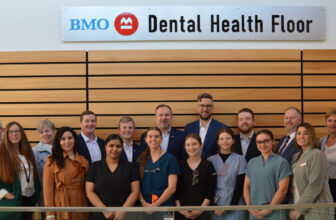
[adinserter block=”4″]
We often get questions about how dental insurance works. What is covered? How are claims processed? Why am I getting a bill? With many types of dental insurance plans available, the answers to these questions often depend on the specific coverage you have. What’s true for you won’t necessarily be true for a friend using a completely different insurance carrier. For that reason, understanding dental insurance can feel a little tricky. With the new year upon us, and benefits restarting (more on that below), it’s an ideal time to take a closer look at how dental insurance works.
How much will my dental insurance plan cover?
Dental insurance plans normally break down services into three categories: preventative, basic and major.
- Preventative services include things like routine cleanings, checkups and X-rays. They are typically covered in full because they help keep your smile healthy and detect problems early, which can avoid more serious — and costly — treatment down the road. So take advantage of those preventative benefits when you have them.
- Basic services are common, straightforward corrective procedures. These can include fillings, root canals or tooth extractions. Dental insurance plans generally cover a high percentage of the cost of these services, often up to 80%.
- Major services consist of more complex restorative procedures. These can include dental implants, crowns, bridges, dentures and orthodontic treatment. Dental insurance plans generally pay a lower percentage toward these higher-priced services, and some may not be covered at all.
Keep in mind that different dental insurance plans may vary in how they categorize services. It is very important to review your individual plan to understand how services are categorized and which ones are covered for you. Remember, what’s true for you won’t necessarily be true for a friend with a different plan.
How are claims processed?
After your dental visit, we will send a claim to your insurance carrier. A “claim” is simply a formal payment request for services rendered. The insurance carrier will then review the claim and compare it to what your plan covers. If the service is covered, they will pay a portion of the cost according to your plan. For a preventative service like a cleaning, they will likely pay the entire amount. If the service is partially covered, they will pay only that percentage. You are then responsible for the remaining cost. Typically, they will send you an explanation of benefits (EOB), which is a document that outlines how much they paid for the treatment and how much remains for you. It’s always a good idea to compare your plan to the EOB to make sure everything is accurate.
Is an annual maximum the same as a deductible?
Many insurance plans offer something called an annual maximum. This is the highest dollar amount a dental insurance provider will pay toward your dental work in a given benefit year. If you do not use the entire amount by the end of the year, it will not roll over to the new year. That’s why it is a good idea to use up your annual maximum before the end of the year on any needed dental work. When a new year begins, the entire amount is available again.
An annual maximum is different from a deductible, which is the amount you must pay toward dental work before your insurance benefits will kick in. Once you’ve paid your deductible, your insurance plan will begin to cover the cost of services. Annual maximum and deductible amounts vary depending on your plan.
If your plan includes an annual maximum or deductible, your insurance carrier will apply the cost of the service to it when they review the claim from your visit. The amount you are responsible for paying out of pocket will depend on how much you’ve already put toward your annual maximum or deductible.
What is the allowable amount and how does it benefit the patient?
Most insurance plans have set allowed amounts for in-network providers. Also called a maximum plan allowance or maximum allowable charge, this is the highest amount a carrier has agreed to pay for a specific service, no matter how much we request in the claim. The difference is then written off, so you as the patient are not responsible for it. This gives you a huge discount on services when you use an in-network provider, and also ensures you are billed fairly for treatment.
We know dental insurance can be tricky, so we hope this helps make things a little clearer. If you ever have questions about the treatment we are recommending, or the costs involved, please don’t hesitate to ask. Here’s to another year of smiles!
[adinserter block=”4″]
Source link






